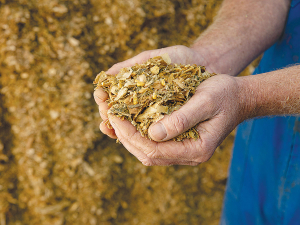Preparing for maize planting
With spring underway, maize growers across New Zealand are preparing for planting.
 More farmers are now carrying stored maize silage to fill early summer feed deficits prior to the next maize harvest.
More farmers are now carrying stored maize silage to fill early summer feed deficits prior to the next maize harvest.
Since the mid-nineties maize silage use on dairy farms has steadily increased, with some farmers now feeding as much as 2 tDM/cow within a season.
Initially, maize silage was mainly fed in autumn to increase lactation length, achieve body condition score (BCS) and pasture cover targets. The next progression was to carry maize silage over to the following season to support higher stocking rates, earlier calving and to feed cows better in early lactation. Finally, with greater summer pasture growth rate variability, more farmers are now carrying stored maize silage to fill early summer feed deficits prior to the next maize harvest. So, how do you get the best bang for your buck when feeding cows maize silage in summer?
Feeding Rates
Ideally, start feeding maize silage before you experience your summer feed pinch. Feeding 2-3 kgDM/cow for a longer period will help maintain a longer grazing rotation (>30 days), prevent over grazing and maintain your average pasture cover for longer. It will also reduce the likelihood of having to supplement with additional protein. During mid-late lactation cows require 14-16% crude protein in their diet. So, feeding 2-3 kgDM/cow of maize silage with a mix of pasture, grass silage and/ or other summer crops is likely to provide sufficient protein to meet cow requirements.
If you intend to feed more than 3 kgDM/cow, calculate the crude protein content of the diet using DairyNZ Feed Checker (or an equivalent feed program). You may be able to manipulate the quantities of other feeds to meet minimum protein requirements.
For more information on protein requirements in summer, check out Episode 3 of Pioneer’s Feed for thought Podcast Podcast - Pioneer
Mineral Supplementation
Maize silage has low concentrations of magnesium, calcium, sodium, and phosphorus. If maize silage makes up 25% of the summer diet or more, deficiencies in these macro minerals become more likely. However, these deficiencies are relatively easy and inexpensive to rectify (Table 1).
Table 1: Typical amount of each mineral supplement to supply with maize silage*
| Maize fed | Limeflour | Causmag | AgSalt | Dicalcium |
| 3.5 kgDM/cow | 60g | 40g | 15g | 20g |
*Laboratory testing to determine the mineral content of all feeds in the diet (including pasture) is the most accurate way to determine actual cow mineral requirements.
Minimising Wastage
Good feed-out management of maize silage is always important as losses can range from 5-40%. This difference between good and poor feed management will significantly impact your economic response to feeding maize silage. So, how do you minimise maize silage wastage?
At The Stack
Keep the face as tight as possible by only shaving or chipping enough feed for the day.
Clean up any loose material left on the ground when you’ve finished removing feed from the face.
Don’t hit the face with too much force as this can allow air to penetrate the stack and cause secondary fermentation.
Try to remove feed from across the entire face of the stack each day.
If birds are a problem, cover the face with shade cloth.
When Feeding Out
Don’t overfill bins.
Feed silage on mature grass along fence lines or in piles.
Don’t feed out more than 8 hours in advance unless your maize silage has been treated with an inoculant containing Lactobacillusbuchneri.
If you would like more information on your summer feed plan, get in touch with one of our Farm Systems specialists (visit pioneer.nz).
Wade Bell is Genetic Technologies farm systems manager. Contact him at This email address is being protected from spambots. You need JavaScript enabled to view it.
Fonterra Edendale has been recognised with the Mars Dairy Supplier Quality Award for the top performing supplier sites in the global food company's dairy supply chain.
Sheep milk processor Maui Milk has achieved grass-fed certification of milk supply against the AsureQuality Grass-Fed Scheme.
OPINION: What goes up must come down. So, global dairy prices retreating from lofty heights in recent months wouldn’t come as a surprise to many farmers.
Fonterra directors and councillors are in for a pay rise next month.
Federated Farmers says it is cautiously welcoming signals from the Government that a major shake-up of local government is on its way.
Ashburton cropping and dairy farmer Matthew Paton has been elected to the board of rural services company, Ruralco.

OPINION: Winston Peters has described the decision to sell its brand to Lactalis and disperse the profit to its farmer…
OPINION: The Hound reckons a big problem with focusing too much on the wrong goal - reducing livestock emissions at…